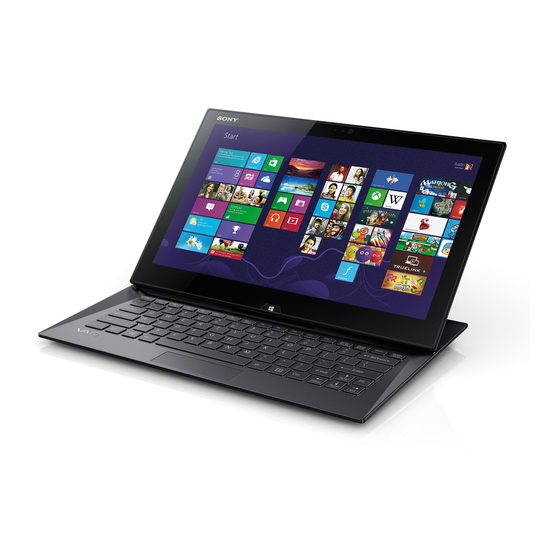
Table of Contents
Advertisement
Quick Links
Personal Computer
VAIO Duo 13
SVD1322
How to Use
Windows 8: The Basics
User account
Switching from a Local Account to a Microsoft Account
About User Account Types
Power
Controlling the Power State of Your VAIO Computer (Sleep Mode/Shutdown)
Restarting Your VAIO Computer
Entering Sleep Mode, Shutting Down, or Restarting
Using Sleep Mode
Display
About the Start Screen and Menu
Opening the App List
Searching Content
Opening the Desktop
Internet
Installing Apps from Windows Store
Password
Switching from a Local Account to a Microsoft Account
About User Account Types
Apps
Advertisement
Table of Contents












Need help?
Do you have a question about the VAIO Duo 13 and is the answer not in the manual?
Questions and answers